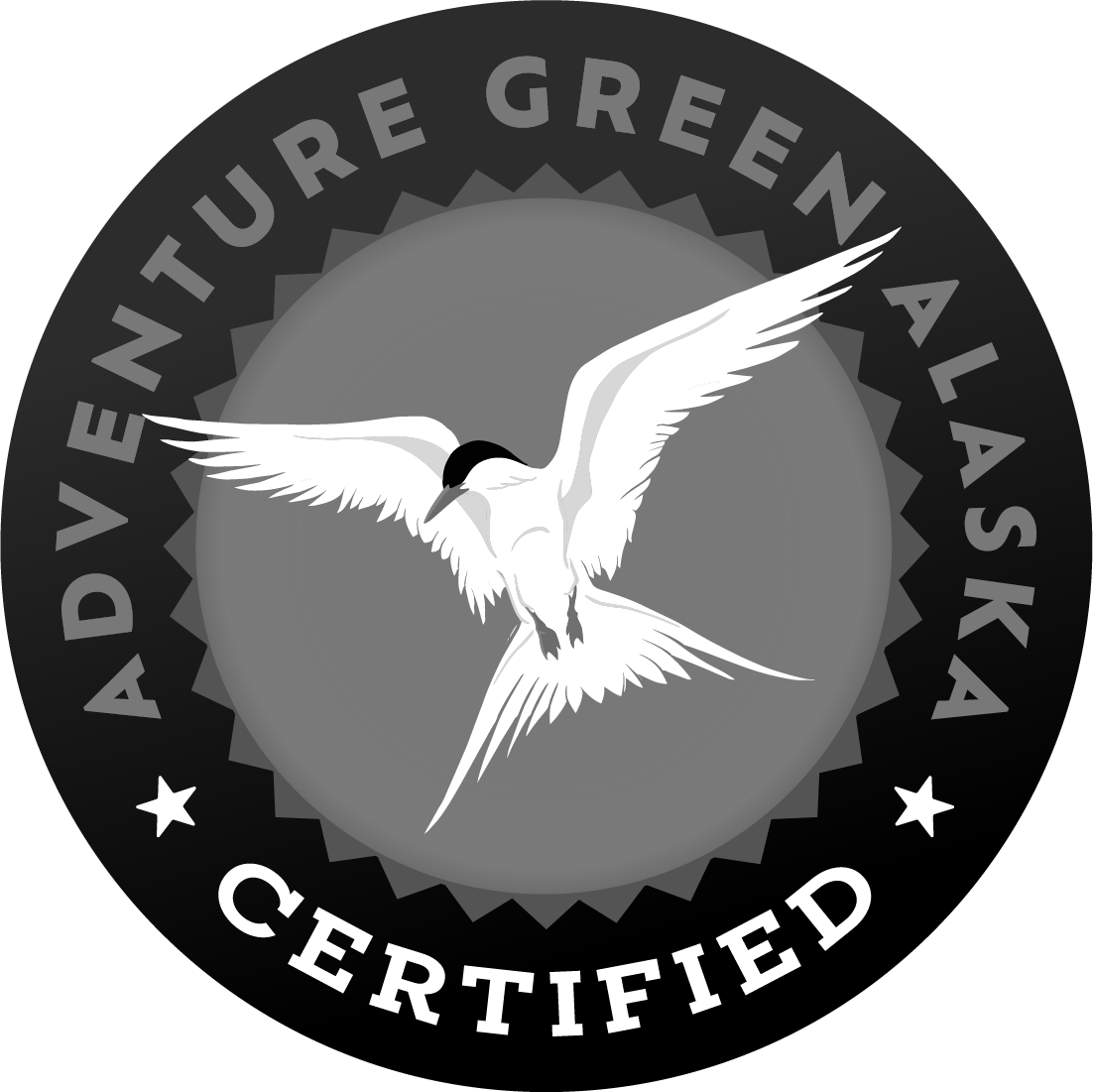On July 15th, 2004 Simon Hamm was leading an exploratory strenuous hike and stumbled upon something rarely seen in the natural world. About one mile north of the Denali Park Road, near mile 75, some bones could be spotted gleaming on a low rise. Approaching the site they found evidence of where an epic struggle had taken place. The tundra and grasses had been matted down in about a forty foot diameter littered with sections of vertebrae, hunks of clavicle and pelvis, cracked long bones, scads of matted hair and fun, abundant wolf scat, and, most notably, two large moose skulls, each with roughly 50 pound antler racks, entwined in the center of it all.
Members of the deer family (Cervidae), of which moose are the largest, grow antlers each mating season. These racks are made of solid bone and can grow as much as an inch a day (imagine that for growing pains!). In most deer family members it is only the males who grow antlers, with the exception of the caribou, in which both sexes have racks (albeit the females have much smaller ones). Antlers differ from horns, which are made of keratin and are kept throughout the life of an animal, growing a small bit more each passing year. Moose antlers are truly stunning objects of sexual prowess; Alaskan moose antlers can span up to 6 feet across! Antlers are the fastest growing organ known; these behemoths take only around 3 months to reach their peak size. A layer of skin, or velvet, covers the antlers to provide a network of vascular tissues and blood for growth. Typically beginning in late August we start to see the velvet begin to tear off in long bloody strips exposing the gleaming white bone beneath.
The rut, or mating season, is typically September and October. A mature bull moose will gather together and defend a “harem” of females, which can number as many as twenty. Younger moose with smaller racks of antlers will sometimes skulk in the willows nearby, awaiting a chance to nab an unattended female. The bulls rarely eat during the rutting season. Stress levels are high, and most dominant bulls will lose substantial amounts of weight by the time of the rut is though. If they are successful, however, their genes will be passed along to a higher proportion of next years calves than their fellow bulls.
How those final hours (or days) for these two very large, mature adult bull moose played out is anyone’s guess. One of the brow tines (the lowest spike of the palmate antlers) protrudes into the eye socket of the other bull, though does not appear to have pierced deep enough to touch the brain. Evidence around the area also indicates that wolves found the two moose, cumulatively a roughly three thousand pound bonanza of meat. Perhaps they found the moose while both were still alive, one was, or neither. It would have been relatively easy for a pack of wolves to take down the moose in such a weakened and impaired state.
Camp Denali and North Face Lodge hiked to the area on occasion for the next few summers. In 2007 the National Park Service airlifted (using a sling and a helicopter) the skulls to the newly reopened Eielson Visitor Center at Mile 66 of the Park Road. Today they still lie there, interlocked for all of time, beneath the flagpole outside the visitor center. You can feel and see the skulls for yourself, and ponder the story of dominance, breeding, and the food chain for yourself.






